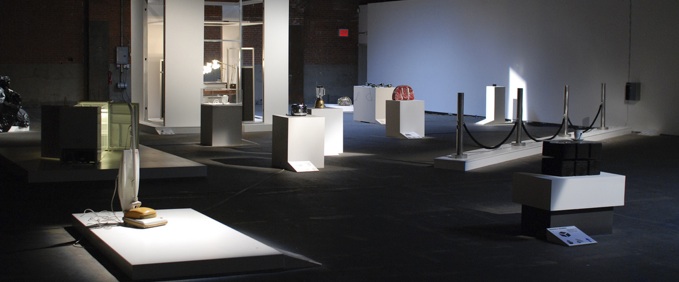In our digital digest a few weeks back, we shared a link to an article titled “Giving Digital Preservation a Backbone” by Steve Kolowich. Kolowich discusses the problems academic libraries face when entrusting the stewardship of their digital resources to large companies like Google and Elsevier.
The major concern in Kolowich’s article boils down to a single question: what happens if our desire to access digital records outlives the financial viability of the company storing them?
The preservation of born-digital records is a topic near and dear to my heart — over the past few months I’ve been working on a senior thesis dealing with internet art preservation policy and issues of memory and obsolescence. The extreme (and extremely short ) summary of preserving and storing digital media artwork goes something like this: conservators fear technological advances outpacing art viewership to such a degree that we’re left with an endless cycle of migrating artworks to newer and newer storage media with hardly any time left to view or exhibit them. In many cases, conservators lack the resources to reformat and reprogram works through each new iteration of a given technology, and the means to read the work becomes obsolete. (There’s no use in having perfectly usable floppy disks without a floppy disk drive…)
Storage methods for digital resources at academic libraries are somewhat different, but the ultimate concern, keeping resources accessible, is the same. Kolowich points to a solution among academic libraries that anticipates servers failing and international companies going under. The Digital Preservation Network (DPN) is a consortium of universities working towards the “long-term preservation of the complete digital scholarly record.” The group helps to aggregate and reduplicate digital scholarship while keeping those records within the academic world, thereby eliminating reliance on the financial viability of any individual organization and preparing for any sort of failure on behalf of its individual member institutions.
Striving toward a fail-safe digital preservation infrastructure is no small task, but given the fragility of born-digital resources, especially in the face of recent preservation disasters, it’s a pretty noble cause. Eyebeam Art + Technology Center, a non-profit exhibition and education organization that focuses on new media and tech-based art sustained serious damage to its massive archive of experimental art during Hurricane Sandy. Flooding at the organization’s Chelsea warehouse contaminated hard drives, servers, DVDs, DV tapes, and other storage devices with toxic saltwater, and left the future of thousands of stored works of art in jeopardy.
[Eyebeam resident Jonathan Minard created the above video about post-Sandy preservation efforts at the organization]
Since the storm, a team of conservators has worked to de-contaminate the records and recover as much of the archive as possible. The threat to stored digital resources more generally is still clear; even the stablest of storage media can’t hold up against a few feet of seawater. In cases like these, only redundancy, a virtue of the DPN that Kolowich mentions in his article, can truly prevent a large-scale loss of resources. Eyebeam’s archive, a relatively small-scale mass of resources compared to that of a company like Elsevier, may still be largely recoverable, but the threat of losing major repositories of cultural and scientific heritage lingers. I, personally, am excited to see an organization like the DPN working to solve the organizational and infrastructural problems that threaten digital preservation — aggregated, collective, replicated networks of information are good for digital storage, and good for facilitating projects (like the DPLA!) that strive to make information more broadly accessible.
Photo courtesy of Sascha Pohflepp on Flickr; used under a CC BY 2.0 license. From “Untethered” a 2008 installation at Eyebeam
